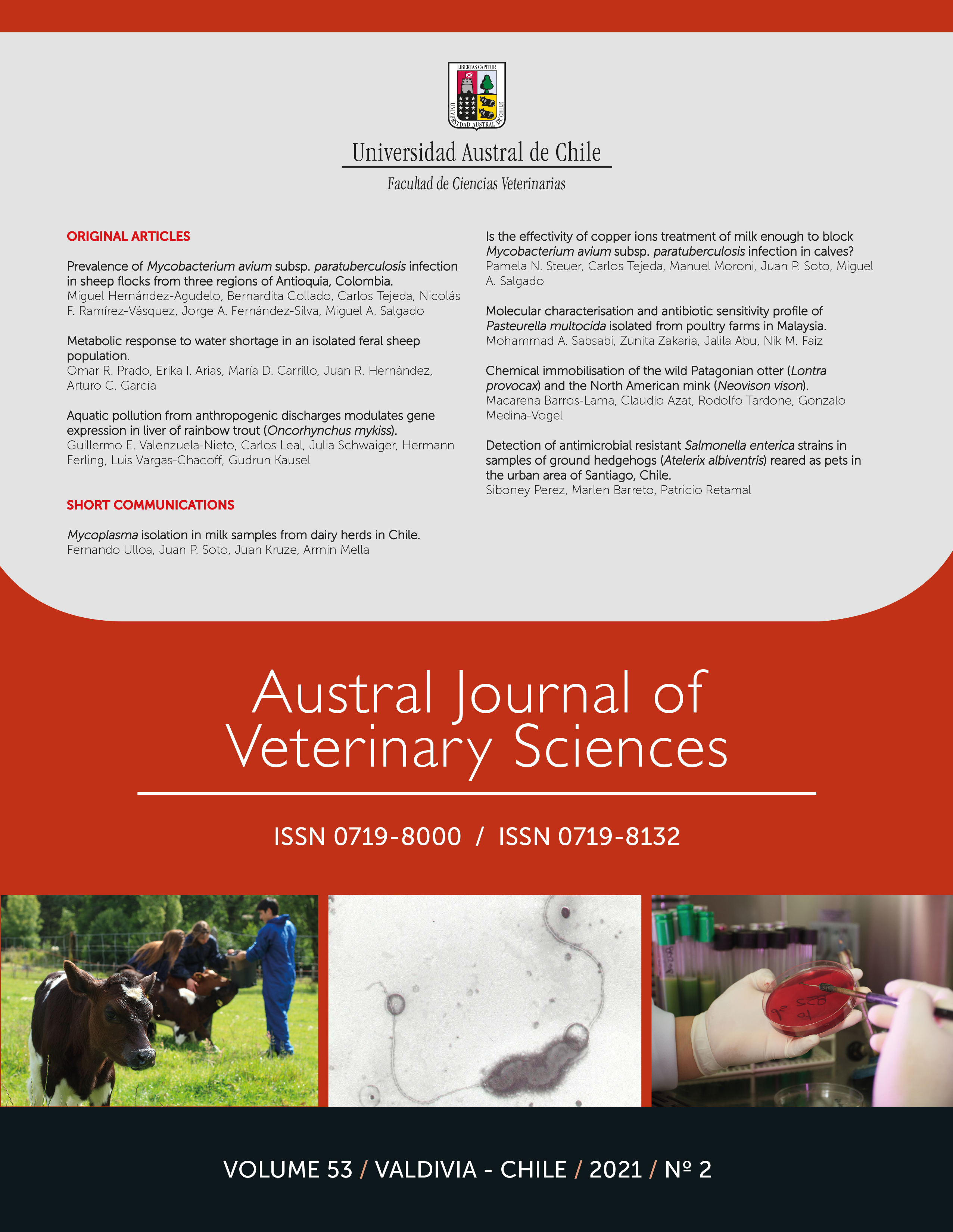Mycoplasma isolation in milk samples from dairy herds in Chile
Main Article Content
Abstract
Mycoplasma bovine mastitis is a highly contagious disease, usually associated with clinical cases refractory to antibiotic treatment. The aim of this study was the isolation of Mycoplasma species in cattle milk samples from dairy herds in Chile. Bulk tank milk samples selected by convenience from 91 Holstein Friesian dairy herds located in Los Rios (66) and Los Lagos (25), the two most important dairy Regions in the country, were collected. Additionally, 100 individual milk samples from cows with a high incidence of clinical mastitis, refractory to antibiotic therapy, and negative bacteriological results for traditional mastitis pathogens, all from the Biobío Region and received in our diagnostic laboratory, were included. All samples were cultured for 10 days on PPLO medium. The differentiation of suspect colonies between genus Mycoplasma and Acholeplasma was performed by the digitonin test and a specific PCR. The species identification was performed by a M. bovis specific PCR and 16S rRNA sequencing. Mycoplasma was isolated from 3 (3.3%) bulk tank milk samples and 2 (2%) individual cow milk samples. All colonies were identified as Mycoplasma by the digitonin test and by a specific PCR. At species level, one strain isolated from a bulk tank milk sample was identified as M. bovis. The remaining two strains isolated from bulk tank milk samples were identified as M. bovigenitalium, while the two strains isolated from milk of individual cows were identified as M. alkalescens. These results show that not only M. bovis is present in Chilean dairy herds, but also other pathogenic species not previously described in Chile such as M. bovigenitalium and M. alkalescens, which pose a potential risk for dairy herds in southern Chile.

